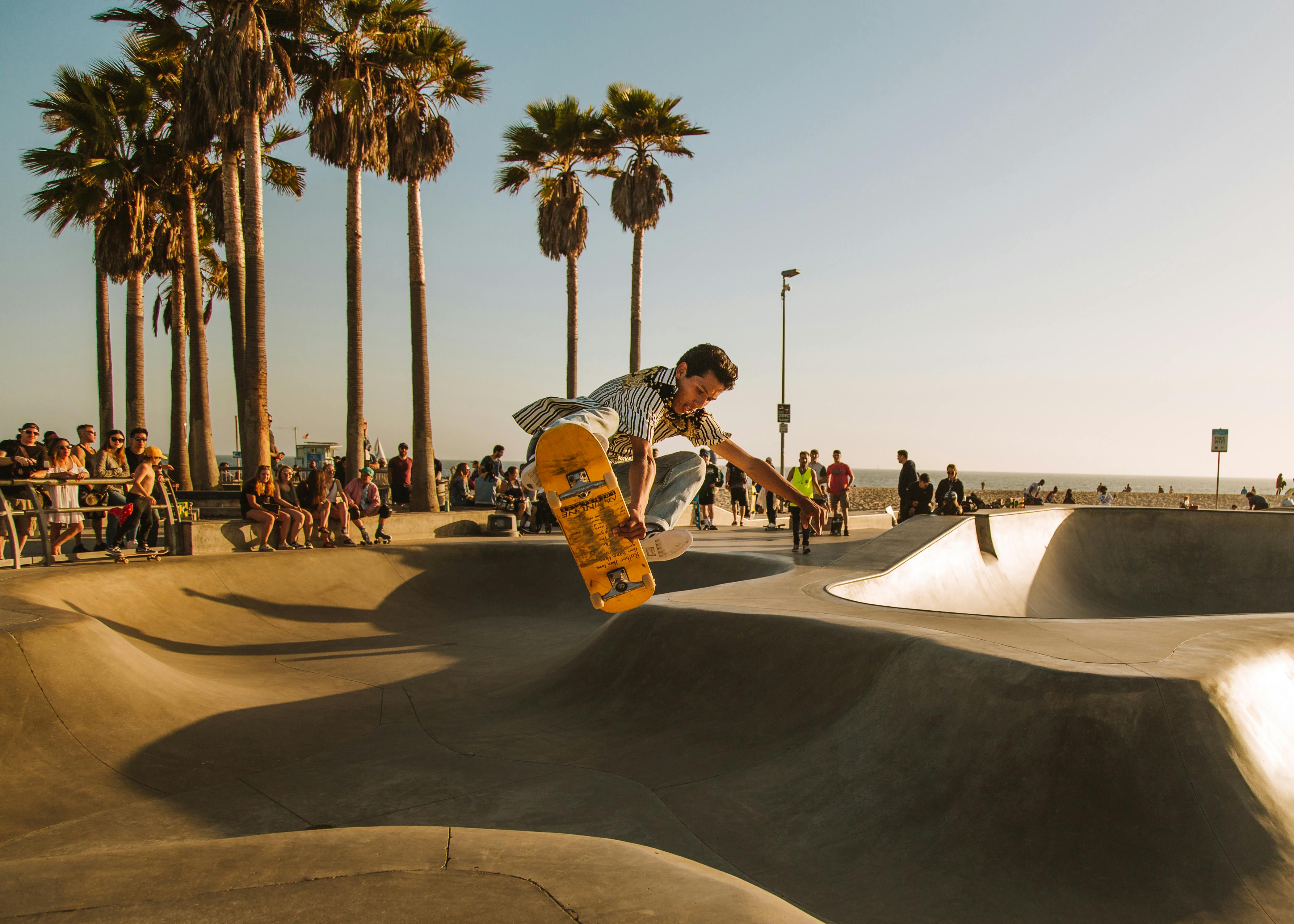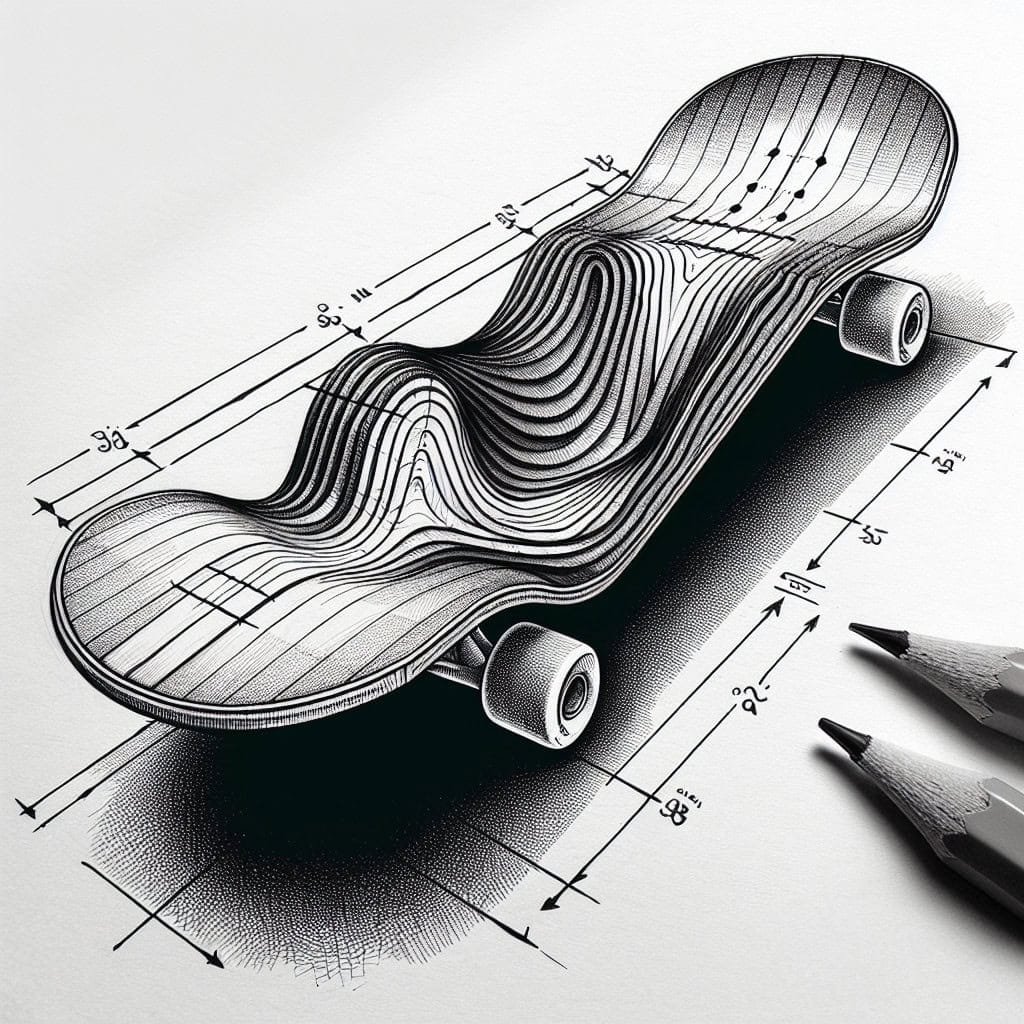Have you ever wondered how the shape of a skateboard deck can affect your ride? Well, the answer lies in the concept of deck concave. Deck concave refers to the curve of a skateboard deck from side to side, and it plays a crucial role in determining how a skateboard performs. This seemingly small detail can greatly influence your stability, control, and overall skating experience. In this article, we will explore the impact of deck concave on skateboard performance, uncovering the secrets behind this fundamental design feature. So, whether you’re a beginner looking to understand the basics or a seasoned skater curious about the science behind it all, read on to discover the fascinating world of deck concave.

Understanding Deck Concave
Definition of Deck Concave
Deck concave refers to the curvature or shape of the skateboard deck. It is the downward curve that runs along the width of the deck, from nose to tail. This concave shape is crucial in providing stability, control, and maneuverability while skateboarding.
Types of Deck Concave
There are three main types of deck concave:
Radial Concave: This type of concave features a smooth, gradual curve from the nose to the tail. It offers a good balance between stability and maneuverability, making it suitable for all types of skateboarding.
Progressive Concave: Progressive concave has a steeper curve towards the tail, providing more leverage and control when performing tricks. It is commonly used by street skaters who focus on technical maneuvers and flip tricks.
W-Concave: W-concave, as the name suggests, has a distinctive “W” shape in the center of the deck. It offers additional foot support and enhances control during slides and grinds. This type of concave is often preferred by downhill and freeride skaters.
Impact on Board Feel and Control
Enhanced Foot Positioning
Deck concave plays a significant role in foot positioning on a skateboard. The concave shape creates natural pockets, allowing your feet to nestle comfortably and securely. This secure footing enhances your overall control over the board, giving you the confidence to execute tricks and maneuvers.
Improved Stability
The concave shape of the deck contributes to improved stability while riding. The curved edges provide increased contact points between your feet and the board, distributing your weight more evenly. This stability is especially crucial when skating at high speeds or attempting tricks that require precision and balance.
Responsive Turning
Deck concave affects the responsiveness of your skateboard’s turning capabilities. The concave shape allows for more leverage and control when leaning into turns, making it easier to navigate sharp corners, carve through bowls, or perform quick maneuvers. The concave acts as a natural guide for your foot, enhancing the fluidity and responsiveness of your turns.
Influence on Tricks and Pop
Enhanced Ollies and Pop
Deck concave significantly impacts your ability to execute ollies and achieve good pop. The concave shape provides a solid platform for your back foot, allowing for a more powerful and controlled pop off the tail. Additionally, the concave assists in locking your front foot in place, aiding in the snapping motion required to achieve higher ollies and better overall board control.
Effective Flip Tricks
For street skaters who enjoy executing flip tricks, such as kickflips and heelflips, the right deck concave is crucial. Different types of concave offer varying degrees of flick and catch, directly affecting the execution and control of flip tricks. Progressive concave, with its steep tail curve, provides more leverage and control for flicking the board and catching it with precision.
Flicking Techniques
The concave shape also influences specific flicking techniques used in skateboarding. For instance, a steep progressive concave is ideal for pressure flips and varial flips, where the exaggerated nose and tail enable precise flicking motions. On the other hand, W-concave can assist in kickflips and other tricks that require a consistent and centered flicking motion.
Effect on Maneuverability
Agility for Quick Turns
Deck concave contributes to the overall maneuverability of a skateboard. A concave deck allows for quick and sharp turns with minimal effort. The curvature of the deck helps guide your feet and provides leverage for responsive turns, making it easier to navigate around obstacles or execute quick direction changes.
Navigating Obstacles with Ease
The concave shape plays a crucial role in navigating obstacles such as rails, curbs, and ramps. It allows for better control and precision when grinding or sliding across surfaces. The concave shape promotes stability during slides and enhances your ability to balance on curbs or ledges, making it easier to maneuver smoothly.
Carving and Sliding
Whether you enjoy carving on a smooth surface or sliding sideways, deck concave aids in these maneuvers. The curvature of the deck provides the rider with increased grip and control while executing smooth carves or aggressive slides. The concave acts as a guide for maintaining balance and control through these maneuvers, giving you the confidence to push your limits.

Considerations for Riding Style
Street Skating
For street skating, where technical flip tricks and ledge grinds are prominent, a deck with a progressive concave is often preferred. The steeper tail curve offers increased control and leverage for executing tricks, providing a solid foundation for street riders to showcase their skills.
Vert Skating
Vert skating, which focuses on skating ramps, bowls, and halfpipes, benefits from a deck with a more mellow concave. A radially concave deck provides stability, allowing vert skaters to maintain control during high-speed transitions and aerial maneuvers.
Transition Skating
Transition skating, which combines elements of street and vert skating, requires a balance between stability and maneuverability. Many transition skaters opt for decks with a moderate concave, providing the ideal compromise between control and versatility to navigate various terrain.
Choosing the Right Concave
Personal Preference
When selecting a deck concave, personal preference plays a crucial role. Some skaters have a natural affinity for a particular concave shape, which feels more comfortable and intuitive to them. Experimenting with different concaves can help you find the one that aligns with your style and offers the maximum comfort and control.
Skill Level and Experience
Skateboarders at different skill levels may have varying preferences when it comes to deck concave. Beginners may find a more mellow concave easier to balance on and control, while advanced riders may opt for a steeper concave to enhance their tricks and control.
Body Type and Shoe Size
Consideration should also be given to body type and shoe size when choosing a deck concave. If you have larger feet or prefer more foot support, a deck with a deeper concave or W-concave might be more suitable for you. Conversely, skaters with smaller feet or who enjoy a more minimalistic feel may prefer a deck with a milder concave.

Combining Concave with Width
Finding the Optimal Combination
The combination of deck concave and width has a significant impact on skateboard performance. Generally, a concave that matches the width of the deck provides optimal control and balance. However, experimenting with different combinations can help fine-tune your setup to suit your riding style and personal preferences.
Effects of Narrow vs. Wide Decks
Narrow decks tend to have a more pronounced concave due to the smaller width, offering increased control and responsiveness. They are favored by street skaters who prioritize technical tricks and quick foot movements. On the other hand, wider decks provide more stability and are commonly preferred by transition and vert skaters who prioritize speed and control.
Deck Concave and Footwear
Shoe Compatibility
When considering deck concave, it’s essential to take into account the compatibility with your skate shoes. Some skaters find that the shape and depth of the concave can affect how their shoes grip the board. It’s worth experimenting with different concave shapes to find the one that works best with your choice of footwear.
Impact on Foot Comfort
Deck concave also has an impact on foot comfort during skating sessions. The curvature of the deck affects how your feet rest on the board. Skaters with flat or more arched feet may prefer different concave shapes for maximum comfort and support. Additionally, the depth of the concave can influence foot fatigue during longer skate sessions, so it’s important to find the right balance for your individual needs.
Maintaining Concave Over Time
Deck Material and Construction
The material and construction of the deck can affect the longevity and maintenance of the concave. Higher-quality deck materials, such as Canadian maple, tend to retain their concave shape for longer periods. Additionally, keeping your skateboard away from excessive heat or moisture and avoiding heavy impacts can help preserve the integrity of the concave over time.
Regular Board Care
Regular maintenance and care of your skateboard can help maintain the concave. Keeping your grip tape clean and replacing it when necessary ensures that your feet grip the concave effectively. Additionally, periodically tightening or replacing the hardware, such as screws and nuts, can prevent the deck from losing its shape and affecting the concave.
Experimental Concave Designs
Innovative Shapes and Enhancements
Deck concave continues to evolve with skateboarding trends and technological advancements. Innovative shapes and enhancements, such as asymmetrical concaves or tweaked curve designs, are being introduced to cater to the diverse needs of skateboarders. These designs aim to push the boundaries of performance and offer new possibilities for tricks and maneuvers.
The Future of Deck Concave
As skateboarding evolves, so does the potential for further experimentation with deck concave. The future of deck concave may see even more advanced concave profiles, tailored to specific riding styles and preferences. With advancements in materials and manufacturing processes, skateboarders can expect even more customized concave designs that optimize performance and enhance the overall skateboarding experience.
In conclusion, deck concave plays a crucial role in skateboard performance. From enhancing foot positioning and control to impacting trick execution and maneuverability, the concave shape directly influences how a skateboard feels and responds. Choosing the right concave, considering personal preference, skill level, and body type, can significantly enhance your skateboarding experience. Regular maintenance and care, along with experimenting with different concave designs, can help you optimize your setup and embrace the exciting possibilities offered by deck concave.

